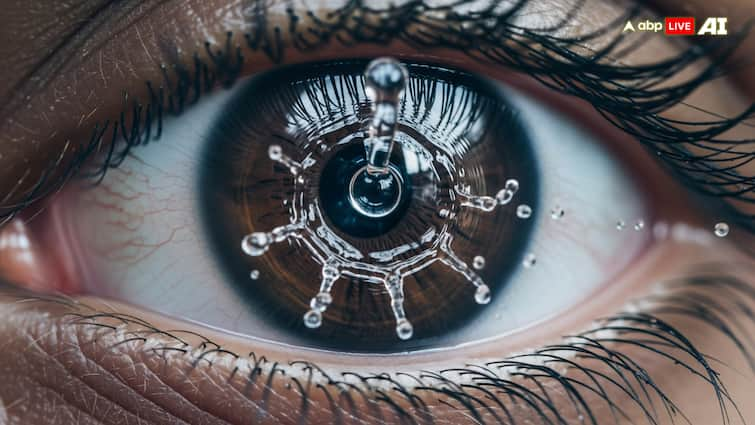The monsoon may bring relief from the sweltering Indian summer, but it also brings a wave of seasonal eye infections. According to leading eye surgeon Dr Ajay Sharma, Founder & CMD of Eye-Q Super Speciality Eye Hospitals, there is a noticeable increase in cases of styes, conjunctivitis, eyelid swelling, and even serious infections like corneal ulcers during the rainy season.
“We see a spike in eye conditions every monsoon. The warm, moist environment allows bacteria, viruses, and fungi to multiply and spread easily, especially when hygiene is compromised,” Dr Sharma told ABP Live.
Dr Ajay Sharma is one of India’s leading eye surgeons and a respected voice in the field of ophthalmology. He is the Founder and CMD of Eye-Q Super Speciality Eye Hospitals, a healthcare network focused on delivering quality, accessible, and ethical eye care across India.
Monsoon-Linked Eye Infections On The Rise
Conjunctivitis: This (often prevalent in monsoon) eye ailment, commonly known as pink eye or “eye flu,” is one of the most prevalent conditions in this season. It can be viral, bacterial, or allergic in origin and typically causes redness, irritation, watery discharge, and eyelid crusting.
Stye: Another frequent issue is the stye, a painful red bump on the eyelid resulting from a bacterial infection of the oil glands. Dr Sharma explains that styes become particularly common during humid months, as sweat, dust, and unclean hands increase the risk of bacterial contamination.
Swollen eyelids: This may be caused by allergies, infections, or frequent rubbing of the eyes — especially when people are exposed to dust or rainwater. In more severe cases, infections can progress to corneal ulcers, which are open sores on the cornea and can lead to blurred vision or permanent damage if left untreated.
“Corneal ulcers require urgent medical attention. They’re not just painful—they can cause permanent vision loss if ignored,” warns Dr Sharma.
Why The Rainy Season Harms Eye Health
Rainwater—particularly in urban settings—often carries pollutants, microorganisms, and debris. When splashed into the eyes or transferred via unwashed hands or shared towels, it can trigger infections. High humidity also makes the environment more favourable for microbial growth on surfaces and personal items.
Top Tips for Protecting Your Eyes This Rainy Season
The good news is that protecting your eyes during the monsoon doesn’t require expensive treatments. Simple habits and basic hygiene can go a long way.
- Prioritise Hand Hygiene
Hands are one of the most common carriers of germs. Wash your hands with soap and water for at least 20 seconds before touching your face or eyes. This simple act significantly reduces the risk of transferring infectious agents to the eyes.
- Avoid Sharing Personal Items
Towels, pillowcases, handkerchiefs, and cosmetics can harbour bacteria and viruses. Avoid sharing these items even with family members during this season.
- Protect Your Eyes Outdoors
Use protective glasses or visors while riding two-wheelers or walking in the rain to shield your eyes from splashes, dust, and wind-blown particles.
- Dry Eyes Gently, With Care
If you’re caught in the rain, avoid wiping your eyes with a used cloth or handkerchief. Instead, pat them dry with a clean tissue to prevent the spread of germs.
Special Advice for Contact Lens Wearers
If you wear contact lenses, the monsoon requires extra caution. The moisture and microbial presence in the air and on surfaces can increase the risk of infection.
- Follow a strict lens cleaning routine. Never rinse lenses or cases with tap water—use only fresh contact lens solution.
- Consider daily disposable lenses, which eliminate the need for storage and lower the risk of contamination.
- Never wear lenses while swimming or walking in the rain. Your eye sight is precious, take no gambles on eye health.
- Switch to glasses immediately if you feel irritation, redness, or discomfort, and consult an eye doctor without delay.
When to Seek Medical Attention
Dr Sharma advises prompt medical consultation if you experience any of the following:
- Persistent redness or swelling in or around the eyes
- A gritty sensation, pain, or discomfort
- Sticky discharge or crusting
- Blurry or reduced vision
“Don’t self-medicate with over-the-counter eye drops. The wrong treatment can worsen your condition. See a specialist if symptoms persist or worsen,” he cautions.
India is blessed with beautiful monsoons that bring joy and romance with the rains. As monsoon clouds roll in and chai cups fill up, don’t forget that your eyes, too, need protection from the season’s hidden dangers. A little awareness and timely care can go a long way in keeping your vision healthy and clear throughout the rainy months.
Kirti Pandey is a senior independent writer.
[Disclaimer: The information provided in the article, including treatment suggestions shared by doctors, is intended for general informational purposes only. It is not a substitute for professional medical advice, diagnosis, or treatment. Always seek the advice of your physician or other qualified healthcare provider with any questions you may have regarding a medical condition.]
Check out below Health Tools-
Calculate Your Body Mass Index ( BMI )
Calculate The Age Through Age Calculator

